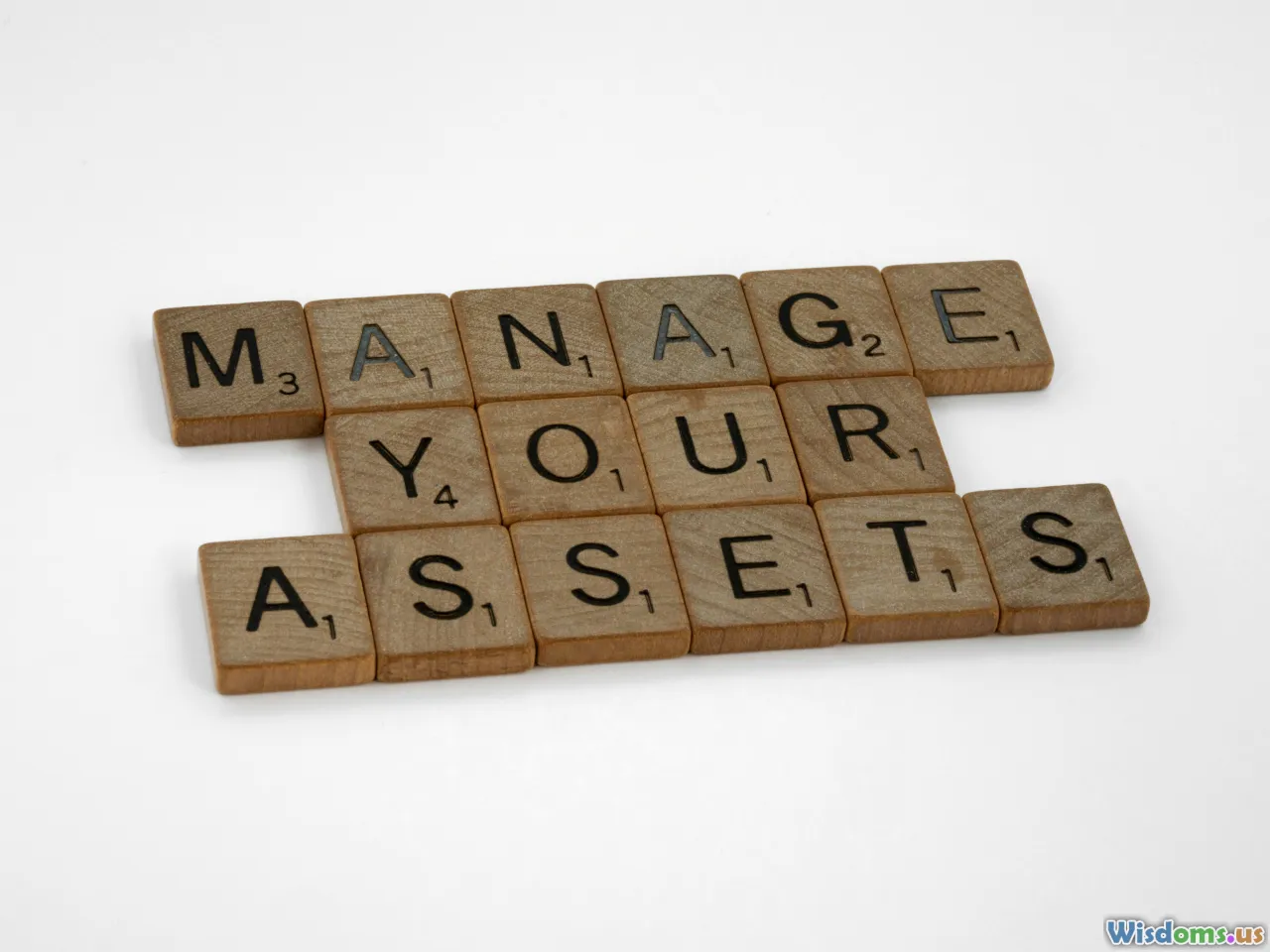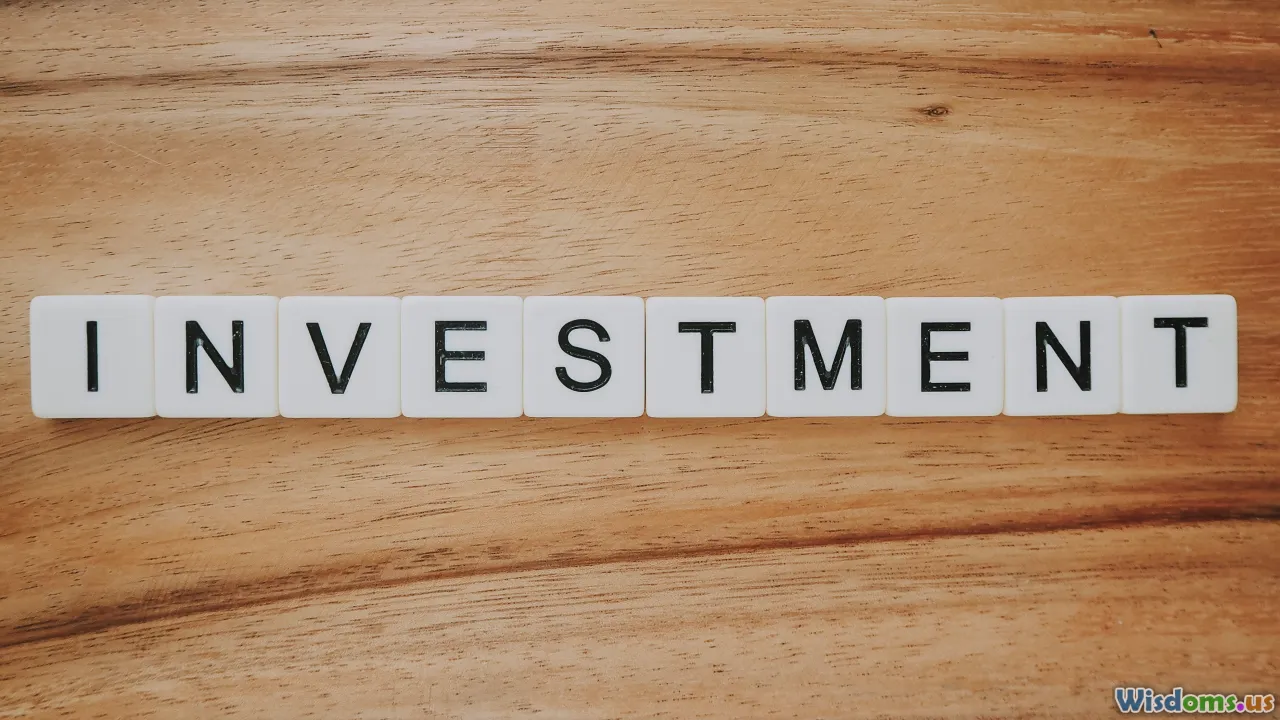
Ten Common Portfolio Management Mistakes to Avoid Today
13 min read Discover and prevent ten common portfolio management mistakes to enhance your investment strategy and achieve better financial outcomes. (0 Reviews)
Ten Common Portfolio Management Mistakes to Avoid Today
For both seasoned investors and beginners, managing a portfolio is as much art as it is science. The decisions you make can have long-term implications for your financial health, yet common missteps can easily undercut even the savviest strategies. By understanding and side-stepping these errors, you give yourself a greater shot at sustainable investment success.
Neglecting Diversification

One of the gravest errors is concentrating too much of your capital in similar asset classes or even a handful of stocks and bonds. The guiding principle of diversification—“Don’t put all your eggs in one basket”—remains foundational. Real-world market downturns underscore its importance. For example, consider the 2022 tech stock slump, which saw several high-flying companies lose 30-50% of their value. Investors who diversified across sectors (technology, healthcare, utilities, real estate, etc.) fared notably better.
A prudent approach involves spreading assets not just among different stocks, but also across asset classes (stocks, bonds, commodities, real estate, etc.), geographies, and even investment styles. Exchange-traded funds (ETFs) and index funds offer an accessible means to achieve broad diversification without the need for deep research into individual securities.
Ignoring Risk Tolerance

Failing to align your investments with your personal risk appetite is a quick route to discomfort and potentially costly panic decisions. Not everyone can stomach the volatility of equities, particularly during bear markets. Your portfolio should reflect your own ability to weather losses and emotional stress.
An investor close to retirement has markedly different risk tolerance than a 25-year-old just starting out. Mistaking one for the other can force untimely, loss-inducing sell-offs. Regularly reassessing your comfort with risk—and adjusting allocations accordingly—is key. Many online brokers now provide easy-to-use risk assessment tools to guide portfolio construction.
Failing to Define Clear Objectives

Without concrete, time-bound investment goals, it’s easy to veer off course. Whether you’re saving for a child’s college education, a home down payment, or retirement, clarifying your objectives informs your asset mix, investment timeline, and risk acceptance.
A portfolio with no direction is akin to a ship without a rudder. For example, a 10-year investment horizon for educational funds should not be managed like a short-term emergency fund, which demands liquidity and safety. Use a written investment policy statement—a formal document outlining your goals and investing approach—to improve focus and accountability.
Overtrading and Market Timing

The temptation to time the market—to buy low and sell high-–has cost more investors money than it has enriched. Study after study, including data from DALBAR’s Quantitative Analysis of Investor Behavior, show that most individuals underperform the market average due to ill-timed, emotionally charged moves.
Frequent trading racks up transaction fees and taxes, and often results in selling winners too early or holding onto losers too long. A vivid example is the 2020 pandemic crash and subsequent recovery: investors who panicked and sold missed the swift market rebound, while those who stayed invested recouped and then gained. Discipline means sticking to a long-term plan regardless of market noise.
Overlooking Costs and Fees

Every dollar paid in fees is a dollar lost to compounding. Investors often ignore management fees, trading commissions, sales loads, and embedded costs in mutual funds or ETFs. Over time, even seemingly minor fees can dramatically erode portfolio returns.
Consider this: A 1% annual fee on a $100,000 portfolio over 30 years, assuming 6% annual returns, could cost you over $80,000—money better reinvested. Always compare expense ratios and fee structures before choosing investments. Low-cost index funds typically beat actively-managed funds net of fees.
Letting Emotions Drive Decisions

Human psychology can be the greatest enemy to rational investing. Greed during bull markets and fear during downturns drive poor choices: buying high on hype and selling low on headlines. The behavioral bias of loss aversion causes investors to feel losses more acutely than equivalent gains, often leading to snap judgments.
For example, during the “meme stock” boom in 2021, a surge of retail investors bought into highly-volatile, overvalued stocks, only to suffer steep losses later. Awareness of cognitive biases and maintaining discipline through market cycles helps to mitigate emotion-driven mistakes.
Ignoring Tax Implications

Taxes can significantly impact net investment returns. Failing to consider capital gains exposure, tax-advantaged accounts, or annual harvesting opportunities leads many investors to pay unnecessary taxes.
For instance, unnecessarily selling securities held under one year subjects gains to higher short-term tax rates. Conversely, keeping high-yield investments in taxable accounts instead of IRAs forfeits potential tax-deferred growth. Using tax-loss harvesting strategies to offset gains and balancing taxable and tax-free accounts can deliver a measurable boost to after-tax returns.
Holding On to Poor Performers Too Long

Investors often succumb to the "sunk cost fallacy,” holding onto failing investments in the hope they will recover. This inertia can hinder performance and weight down an otherwise successful portfolio.
For example, a stock down 50% would need to double just to break even—a high bar, particularly if the underlying company’s fundamentals have deteriorated. Schedule regular portfolio reviews and set concrete rules for selling (e.g., a stop-loss or performance threshold). Don’t let hope replace analysis.
Chasing Past Performance

All too frequently, investors pick mutual funds or stocks based on previous years’ returns, assuming that outperformance will naturally continue. Yet, studies show that top funds often fail to repeat their winning streaks. The SPIVA scorecard regularly finds most active managers lag benchmarks over five-year periods, and the afterglow of stellar returns is no predictor of future results.
Instead, evaluate investments based on their suitability, fees, risk profile, and consistency rather than headline past gains. Ask: "Why did that investment outperform in the first place?" Was it luck or skill? Market circumstances change, and relying solely on rearview-mirror data leads to disappointment.
Failing to Rebalance Regularly

Over time, markets move, and asset allocations drift from the original plan. An allocation meant to be 60% stocks and 40% bonds may, after a strong bull market, end up as 80% stocks and 20% bonds. Suddenly, you're exposed to more risk than intended.
Regular rebalancing—returning the portfolio to its target mix—reinforces discipline and locks in gains. This can mean selling high-performing assets to buy laggards, an emotionally counterintuitive but effective strategy. Setting up automatic rebalancing (available with many robo-advisors and 401(k) plans) takes the guesswork out of maintaining balance, ensuring risks remain aligned with your goals and risk profile.
Bonus: Ignoring the Role of Cash

In the ambition to maximize returns, cash is often overlooked. However, some cash allocation provides a vital liquidity buffer for emergencies, near-term expenses, or opportunistic investments when markets decline.
A well-managed portfolio always reserves some cash, much like a business maintains working capital. During times of market turbulence—such as the 2008 financial crisis—investors with sufficient cash on hand could ride out volatility with confidence or make timely investments. Review your liquidity needs and maintain an appropriate “rainy day” reserve without undermining your long-term growth objectives.
Portfolio management requires ongoing attention, discipline, and the humility to learn from mistakes—yours or others’. By recognizing these common missteps and building processes to avoid them, you safeguard your assets and tilt the odds of success in your favor. Every investor will encounter storms on their wealth-building journey; proper stewardship and adaptability make the difference between thriving and barely surviving.
Rate the Post
User Reviews
Popular Posts




















